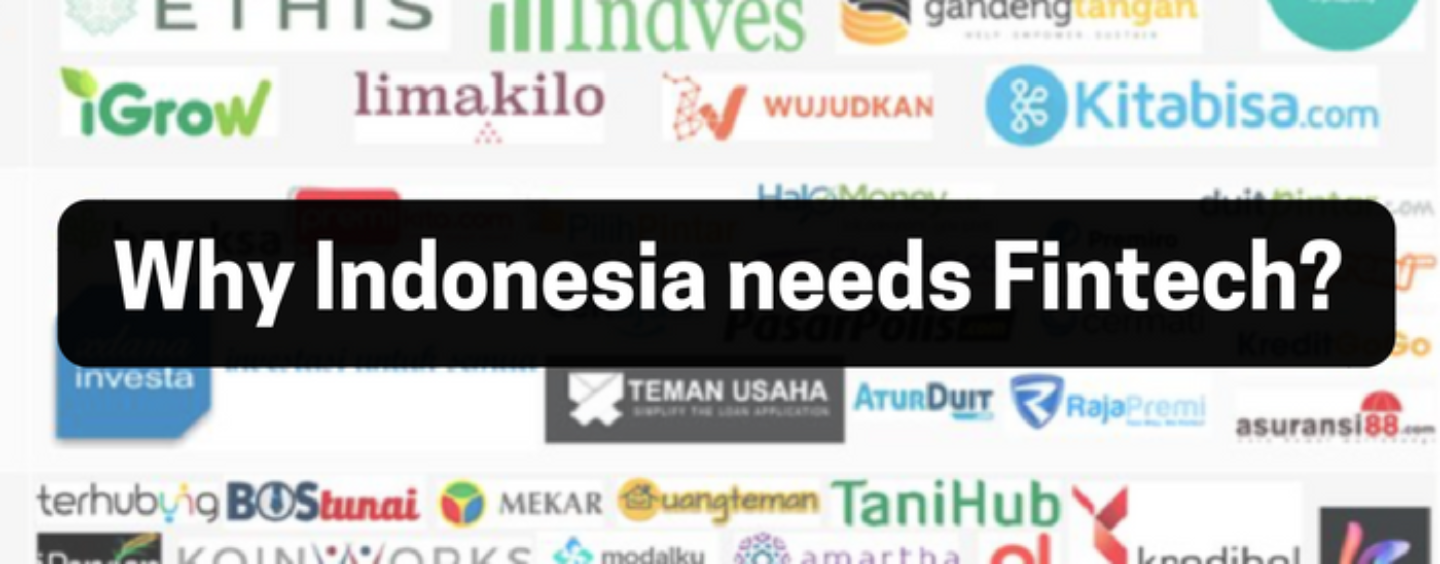Southeast Asia’s largest economy would rather use fintech platforms for their financial needs rather than the country’s more well-established banking institutions with regulations being proposed to safeguard investors and borrowers alike, Indonesia’s fintech industry is set to expand even further.
Social enterprise Kitabisa.com is just one of the several crowdfunding sites that leverage Indonesia’s digitally-savvy base to further its cause. Kitabisa.com, which translates to “we can”, helps local communities reach their financial goals, whether they are for building schools in rural areas, or helping a loved one with medical expenses. It is relatively successful so far, with Rp 111 billion in total donations collected since its inception in 2013.

Indonesia’s capital Jakarta is home to 10 million people
Indonesians’ preferred mode of communication is the humble mobile phone. This has led to payment gateways platforms facilitating financial transactions over a mobile device.
From crowdfunding sites, to payment services and microfinance, fintech in Indonesia is serving a hugely diverse and well-connected population. According to the Indonesian Fintech report by Fintech Indonesia and Daily Social, over 100 million Indonesians are Internet users, the bulk of which (70 percent) use their mobile phones to access the web.
Indonesia’s main cities are also suffering from severe gridlock, making in-person cash transactions difficult and time-consuming.
Only 9 percent of Indonesians use credit cards for payments, with most Indonesians preferring cash or bank transfers. And with just 36 percent of Indonesians having an account at a bank, this has led to the rise of payment gateway platforms such as DOKU and virtual wallet GO-PAY.
At 43 percent, the payment service industry makes up the lion’s share of Indonesian fintech businesses. This makes sense, as it seems much quicker to download an app for small cash transfers, than it is to go to a bank to do so. “I’ve not even registered for a security token to do e-banking with my bank,” said Ali, a Jakarta-based freelance commercial producer.
Interest rates at banks remain high
Recent media reports noted that lending rates in Indonesia remain double digit, above President Joko Widodo’s target of 9 percent. In October, Indonesia’s average loan rate on working capital loans was 11.6 per cent, despite the central bank maintaining its benchmark rate of 4.75 percent, according to a January Reuters report. Reuters added that economic uncertainty and a historically unstable rupiah contribute to high borrowing rates for businesses in Indonesia.
Indonesian fintech for Indonesians
That’s where Indonesian crowdfunding and lending platforms come in. The industry has grown rapidly, with the number of fintech platforms increasing by 78 percent from 2015 to end of 2016, said the fintech report. It noted that the total disclosed sum invested in fintech in Indonesia adds up to Rp 486.3 billion.
Unlike banks, most fintech startups are borne out of social issues that Indonesians face. Lending platforms are used mainly by local small-and- medium enterprises, whose unproven track record and lack of collateral deter banks from lending to them. The social angle helps ensure that whatever funds that are distributed go into helping the Indonesian communities.
For instance, Islamic crowdfunding sites Kapital Boost and EthisCrowd serve the predominantly Muslim Indonesian populace. And as the world’s most populous Muslim nation, opportunities for Islamic crowdfunding seem endless. Singapore-based Kapital Boost, for example, has clients from a broad range of industries, from telecommunications companies to Halal candy shops, operating mainly in Indonesia. Crowdfunding campaigns are expected to generate annual returns of 15 percent to 24 percent for investors, according to Kapital Boost.
Agriculture is the main livelihood for rural communities, and enterprising Indonesians hope to improve the earning power of local farmers. Indonesian agritech startup Limakilo aims to bridge buyers with farmers directly, cutting out the middleman completely.
Garlic is widely used in Indonesian cuisine and can be bought directly from farmers through Limakilo.
The startup acts like as a buy-sell platform to bring the consumer. According to Limakilo, products, mainly shallots, garlic and onions, are sold on the platform are about 15 percent cheaper than those sold in physical stores and markets.
Regulation needed
But with all emerging sectors, a higher level of risk is involved. As it is a fairly new trend, government regulations have yet to be drawn up and enforced. Based on a 2016 survey by Deloitte Consulting and Asosiasi Fintech Indonesia, almost half of fintech players (49%) feel that current regulatory process is slow and 61% of them feel that regulation in Indonesia today is not so clear or in a grey area.
As a result, Bank Indonesia (BI), the country’s central bank, is pushing for better regulations by end of this year. The Daily Social report noted that BI could further regulate formal banking processes such as payment transactions and virtual wallets, data security, as well as consumer protection. While the Financial Services Authorities, or Otoritas Jasa Keuangan could work on regulations that cover areas such as digital know-your- customer, digital signature and online lending, for non-banking fintech startups.
As a whole, the Indonesian economy is leveraging fintech towards better financial inclusion and literacy in Indonesia. Clearer rules, better data security and tougher consumer protection could be what fintech needs to help improve the financial lives of 263 million Indonesians.








